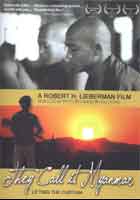
They Call It Myanmar: Lifting the Curtain 2012
Distributed by New Yorker Films, 220 East 23rd Street, Suite 409, New York, New York 10010; 212-645-4600
Produced by Photosynthesis Productions
Directed by Robert H. Lieberman
DVD, color, 83 min.
Sr. High-General Adult
Asian Studies, History, Human Rights, Religious Studies
Date Entered: 06/28/2012
Reviewed by Kim Stanton, University of North Texas LibrariesThey Call It Myanmar is a beautifully shot documentary that examines both the cultural richness of Burma (aka Myanmar) and the devastation recent history has wrought on its citizens. The film finds a balance between political documentary and travelogue of the country and its culture.
As news reports provide ongoing coverage of the delicate democracy movement in Burma, this film serves as an excellent review of the country’s tumultuous history. The film touches on Burma’s culturally rich pre-colonial background, then goes into more depth on its transformation into a British colony in the late 19th century, followed by the 1948 formation of a democratic republic and then to the military rule that governed the country from 1962 until 2011. Filmmaker Robert H. Lieberman initially completed filming before the 2011 dissolution of the country's military junta, so the film does not cover the most recent elections and protest movements. However, Lieberman was able to return and interview Burmese National League for Democracy figurehead Aung San Suu Kyi, recently released from over 15 years of house arrest, and has incorporated her thoughts on the situation in Burma into the documentary.
The film primarily focuses on the social and economic toll that military rule has taken on the citizens of Burma. Funding for public works is miniscule, speech is censored and the Burmese interviewed repeatedly described aspects of their daily lives as “unpredictable”. The economic impact of this situation has had massive effects on health care and education in the country, driving out a middle class and essentially dividing the country into the super wealthy and the impoverished. Leiberman asserts that one of the reasons the government was able to go on relatively unchecked in this manner for so many years is because Buddhism, the primary religion of the Burmese, places an emphasis on pacifism. The film closes by examining a new generation of Burmese who are more connected with the world and are now beginning to actively challenge Burma’s current political system.
This film is recommended for studies related to Asian politics, area studies and history. Though the film does not cover the most current events happening in Burma, it provides a historical context from which to understand these changes.